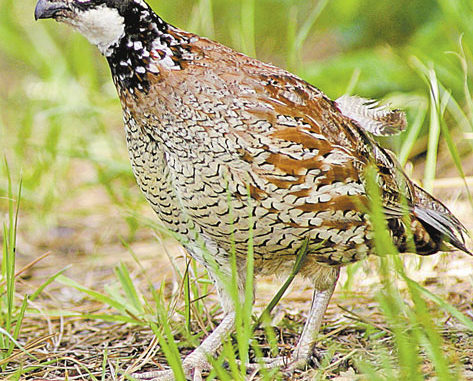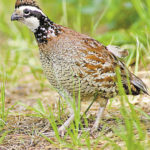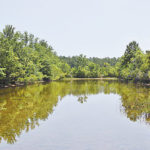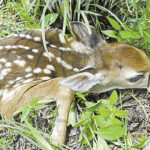
Quail hunters put their guns and blaze-orange shell vests away better than three months ago for a long period of inactivity. But for the real bobwhite enthusiast, year-round care and attention to the species never goes dormant. Favorable habitat manipulation, plus managing and monitoring home coveys always has a place in the life of the quail hunter. Spring and early summer is ideal for conducting call counts to further verify effectiveness of management techniques and tactics.
Over the last century, bobwhite quail populations and their habitat have been cyclic, to say the least. Quail are products of their preferred habitat. Human cultures have indirectly affected quail habitat in one form or another. Land conversion and modern agriculture practices — “clean farming” — have squeezed populations to less-than-preferred levels. But with the help of hunters and state wildlife agencies, bobwhites on private and public lands are making a comeback.
Quail populations are directly proportional to the quality and quantity of available habitat. Basically, quail need food, cover and water. Often, prime habitats have all of these factors within the same vegetative component.
A diverse combination of croplands, forests, grassy fields and brushy areas with rough edges are ideal for bobwhite quail. These areas contain a medium for insects favored by quail, and have many plants that produce small seeds also preferred by quail. Eliminating or rotating mowing cycles along hedgerows and ditches helps add escape cover. Also, farmers can leave harvested grain crops for extended durations to provide quail with a food source during the winter months.
Over the past 30 years, nearly 750,000 acres of private lands throughout the Carolinas have been improved by state-sponsored management plans provided by the N.C. Wildlife Resources Commission and the S.C. Department of Natural Resources.
Landowners throughout the southeast invest huge quantities of time promoting and creating habitats preferred by bobwhite quail, but without verification of positive or negative results, these efforts cannot be qualified. Wildlife managers and landowners must conduct population counts bi-annually to estimate quail populations on their properties. Over time, managers can detect population fluctuations and gauge effectiveness of ongoing management efforts. Research has proven the effectiveness of habitat manipulation for quail, and landowners can too, as long as proper methodologies are followed during each call count.
Quail mate from late May and through to the end of June. Male bobwhites sound off early in the mornings, attempting to attract mates with the characteristic, “poor-bob-white” vocalization. This call is the focus on spring call counts and is used to determine population density or a population index. An index by definition illustrates fluctuations over time.
Permanent listening stations should be established far away from highways and other sources that would impair listening. It is believed that calls can be heard across 600 yards of open fields, but less than 200 yards in densely wooded areas. Listening stations should be scattered throughout the property, trying not to get any overlap between stations. Ideally, stations should be no less than 1,000 yards apart, but land cover and hearing range will determine actual station location and distance between stations.
The best time of the day for spring call counts is from sunrise to two hours afterwards. Call counts should be conducted around the same time every year under similar conditions and on three different days. Don’t try to count on windy or rainy days. Depending on the number of stations surveyed, time should be divided among these stations to adequately survey calls. But three to five minutes at each station is preferred. Whatever time interval is used at each station should be repeated for all stations for each day during the call count.
Calls should be recorded on data sheets and noted of their location and distance or direction from the call station. These counts should be tallied and averaged for each day. This population number represents the number of unpaired males each year and should be used for comparison in later years to determine positive or negative trends as a result of management techniques.
Create watering areas
Every wildlife species requires shelter, space, food and water. All of these components are critical for a wide variety of daily and seasonal routines required by all wildlife to exist.
All creatures are considered prey at one developmental stage or another, and escape cover/shelter is daily living requirement. Even top predators require cover to conceal themselves before ambushing their prey. Wildlife need space for attracting mates and consuming their most critical components to life. Then there is food. All living organisms must feed in one form or another to have energy. Food and water are vital for animal survival. But water, the most critical component of all living organisms, is often overlooked by wildlife managers and is often limiting in certain areas.
Animals obtain water from direct drinking and from the foods they eat. Green plants, fruits, and grasses contain 60- to 95-percent pure water. Fortunately, few animal perspire through the skin tissue, and water losses are kept at a minimum. Game animals found in the Carolinas seek shady places and sources of water for drinking or lounging to thermoregulate.
Overall, water is not a problem for wildlife in the southeast. The majority of wooded lands have good sources of water within a short distance. Water is a limiting factor in certain areas, sending deer and other wildlife to the neighbor’s property to get a daily slurp. Increasing the frequency of standing water will enhance wildlife populations and should be part of any wildlife management plan. Watering areas should be permanent, with water available throughout the year.
Watering areas can be created within upland areas without the need of a federal permit from the U.S. Army Corps of Engineers. Overall size can be from a tenth of an acre up to several acres. Ponds should be relatively shallow, with small, deeper pools for retaining permanent inundation during dry months. The side slopes should be gradual around the perimeter to allow for light penetration and easy entry. The shallow areas will allow for native vegetation to grow during low rainfall to be later flooded in the rainy season cultivating food sources within reach for waterfowl. Terrestrial areas adjacent to the pond edges should remain vegetated to filter runoff and protect water quality in the ponds.
In addition to game species, permanent watering areas provide habitat for small fish and are good breeding zones for reptiles and amphibians.
Baby watch
The annual cycle continues for whitetail deer, and newborn fawns will emerge vulnerable to the world.
Throughout May and June, nearly 90 percent of does will drop their fawns, which are essentially precocious and have the ability to run around within a few hours of birth. But vulnerability to predation and accidental mortality is a real threat for newly-dropped fawns. The springtime fawn emergence is a critical period for deer-population dynamics, replacing the annual mortality with an equal birthing rate, maintaining the future of deer hunting in the state.
Farmers, outdoorsmen and other people roaming throughout the woods should keep a lookout for fawns during late spring and early summer and should stay clear, offering extra protection and caution. Nature equips fawns with a reduced scent and a protective color palate during their first few weeks of life. Even though fawns may appear to be abandoned, does are staying clear of their newborns to protect them because they attract predators with their summer coloration and heavy odor.
During the first few weeks from birth, the fawns’ defense mechanism is to lay motionless within the cover of their surroundings. Fawns should not be disturbed whatsoever during the birthing period.
Domestic dog attacks and routine farm mowing rate among the highest causes of spring fawn mortality.
Female deer usually select abandoned fields, cutovers or old home sites covered with waist-high, grassy areas near food and water with little disturbance. Discing, burning, and mowing practices are discouraged in these areas from April through June to prevent harm to new fawns. In addition, refrain from training dogs in these areas as well into the summer.







Be the first to comment